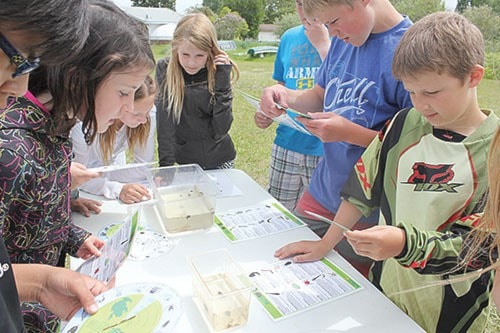Vanderhoof — Students from seven area schools released hundreds of Chinook Salmon fry into the Nechako River Wednesday as part of Fisheries and Oceans Stream to Sea strategy.
Since November, 20 tanks of fish in 27 classes in Vanderhoof, Fraser Lake, Fort St. James, Valemont, Mackenzie, Prince George and McBride were used as part of a learning process to allow students to see the first three steps of the fishes life cycle - eyed eggs, alevin and fry.
Terri Mcclymont, course facilitator with Fisheries and Oceans, says the education comes from raising and releasing the fish because it adds ownership to the environment around us.
“The kids learn about the importance of salmon as an indicator species in our environment in the hopes each one of them become stewards of our rivers, streams, lakes and oceans,” she said.
After each student released a fry, Mcclymont and her Recycling and Environmental Action Planing Society (REAPS) team moved them through three stations to engage the kids with hands on activities. At the first station students used Play Doh and followed along to create their own chinook salmon. With each piece added the fish would take new shape as if moving through the different stages of life.
Alexa Philips, 11, from Sinkutview Elementary said her favourite part of the entire program was seeing the fish every day.
“We had them in the hallway so it was cool to walk by them and see them growing each day,” she said.
The second station during release day showcased clear containers with various insects and things the fry eat such as tadpoles, snails and leeches.
“They don’t necessarily eat them all but these things are all in the same environment,” Christine Anderson said, Recycling and Environmental Action Planing Society (REAPS) representative.
A diagram of a watershed at station three allowed kids to visualize the connection of animals as they talked about various habitats and how they intertwine.
One student from Sinkutview, Autumn Unger, 12, said she liked learning everything about the fish but, one thing stood out.
“I thought it was cool to hear not many of the fish actually survive when they spawn even though there’s so many eggs,” she said.
